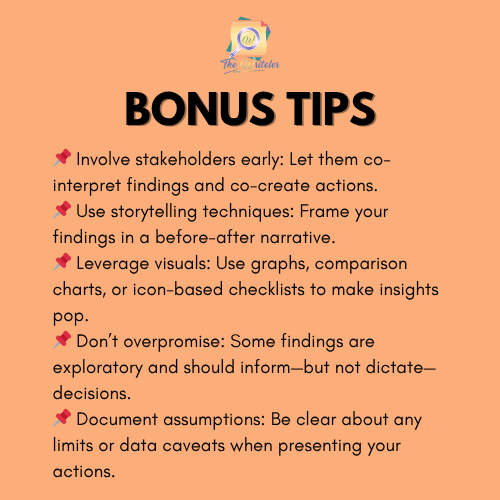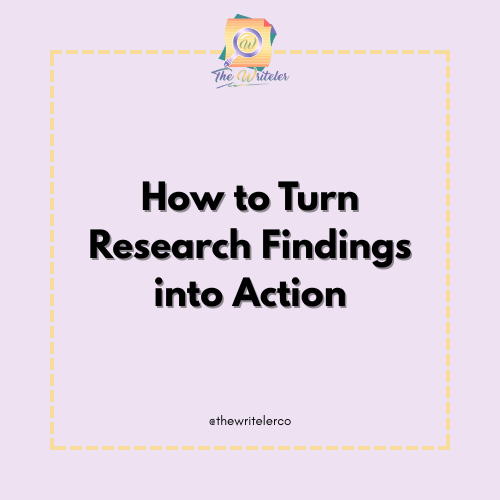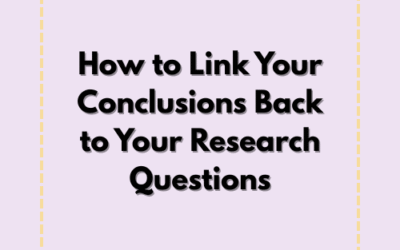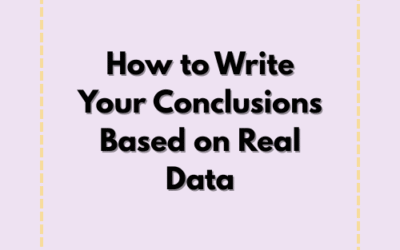You’ve done the work. The data has been collected, cleaned, and analyzed—and the report is complete. The findings are staring back at you in tidy charts, compelling quotes, or conclusive stats. But now comes the part many skip: What do we do with all this?
Research, whether academic, organizational, or industry-based, only becomes meaningful when it drives real-world change. And the leap from findings to action is not automatic—it’s intentional.
This guide walks you through how to interpret your findings, prioritize them, and turn them into focused steps that create impact.
Why Turning Findings into Action Matters
Without action, findings become shelfware. Whether you’re in business, education, government, or research, reports that don’t lead to decisions are wasted potential.
- In a thesis, your findings shape recommendations and future research.
- In market research, findings should inform product strategy or UX changes.
- In policy, findings should drive change on the ground.
🔍 Insight: Great studies don’t just answer questions—they move systems.
Step 1: Understand Your Findings Deeply
Before action comes clarity. Go beyond the surface level of your findings and ask:
- What surprised me?
- Which results confirm or challenge existing assumptions?
- What themes or trends emerged across different data sets?
Don’t rush. Understanding the true story behind the findings is essential before you act.
Step 2: Link Your Findings to the Original Objectives
Every study begins with a goal. Revisit your research questions or objectives and match them with your findings.
Ask:
- Which finding answers which question?
- Were there any unintended findings?
- Which findings are directly actionable?
This creates alignment between your insights and your intention—avoiding off-topic or misaligned recommendations.
Step 3: Prioritize Which Findings Need Action
Not all findings demand a response. Some may be interesting but low-impact. Others are critical and require immediate attention.
Prioritize based on:
- Urgency – Does this finding point to a problem that needs solving now?
- Relevance – Is it closely tied to your goals?
- Feasibility – Can action be taken with available resources?
- Impact potential – Will addressing this finding make a noticeable difference?
This filters noise and helps you focus on what matters most.
Step 4: Translate Findings into Possible Actions
Now that you’ve identified the most critical findings, brainstorm practical responses for each one.
Use these prompts:
- What could we do about this?
- Who needs to be involved in the solution?
- What are the potential barriers to acting on this?
📌 Example:
Finding: 62% of surveyed students felt unmotivated during online learning.
Action: Redesign online modules to include interactive elements and peer discussion.
Don’t worry about perfection yet—this is your idea pool.
Step 5: Convert Findings into SMART Actions
It’s time to tighten the screws. Turn your potential responses into SMART actions:
- Specific – What exactly needs to be done?
- Measurable – How will you know it worked?
- Achievable – Is this realistic?
- Relevant – Does it respond directly to your finding?
- Time-bound – When will this be completed?
✅ Finding: Low engagement during team meetings.
✅ SMART Action: “Pilot a 15-minute meeting format with rotating facilitators for 30 days and assess engagement through weekly surveys.”
Step 6: Communicate Your Findings and Actions Effectively
If your stakeholders can’t understand your findings, they won’t act on them.
Tailor your communication method based on your audience:
- Executives: Infographic summaries, dashboards, or slides.
- Academics: Narrative explanation in your conclusion or chapter 5.
- Public or clients: Visuals, analogies, and plain-language summaries.
Support your proposed actions with evidence from your findings to increase buy-in.
Step 7: Monitor the Outcomes of Your Actions
The feedback loop is critical. After implementation, revisit your original findings and check if your actions led to improvement.
Ask:
- Did the situation change as expected?
- Were the actions correctly aligned with the findings?
- Do we need to adjust our course?
This closes the loop and helps build a system of continuous learning.
Extra Tips for Turning Findings into Action

✍️ Need Help Interpreting Findings or Writing Recommendations?
Work With The Writeler Co. to Turn Insights into Impact
If you’re stuck between raw data and actionable steps, The Writeler Co. is here to bridge the gap.
We offer:
- Professional editing and interpretation of your findings
- Strategic summaries and visual data storytelling
- Customized recommendation sections for thesis, reports, or proposals
- Help with SMART action framing, stakeholder messaging, and Chapter 5 synthesis
📩 Visit The Writeler Co. and let our team help you go from information overload to powerful action plans.
Conclusion: Don’t Let Your Findings Sit Still
Data is only valuable when it moves people. Whether you’re finalizing your thesis or presenting results to a boardroom, your job doesn’t end with your findings—it starts with them.
Don’t let your insights collect dust. Review your results, prioritize what matters, and build a plan. Because real change doesn’t come from research—it comes from action inspired by findings.





0 Comments